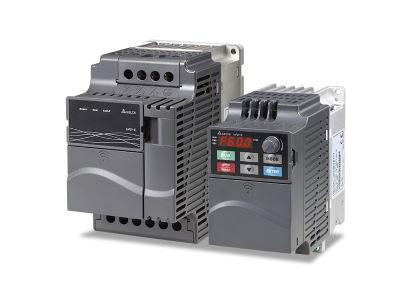Key Takeaway
To measure the output voltage from a VFD to a motor, start by measuring the DC bus voltage. Use a motor drive analyzer or digital multimeter to check the voltage across the + and – terminals. Next, measure the output voltage and ensure it’s balanced across all phases to prevent unbalance issues. Then, measure the current for each phase to detect any unbalance, which can affect motor performance. Verify the volts per Hertz ratio to ensure the motor runs efficiently. Finally, inspect for any output reflections, as these can impact motor efficiency. By following these steps, you can accurately measure and monitor VFD output voltage.
Understanding VFD Display and Indicators
The VFD display provides a wealth of information at a glance. It typically shows parameters like frequency, voltage, current, and error codes. Understanding these indicators is the first step in mastering VFDs.
Most VFDs feature a digital display and various LED indicators. The digital display shows real-time data, while the LEDs indicate status such as power, operation mode, and faults. Knowing what each indicator means helps in quickly diagnosing issues. For example, a blinking fault LED usually signals a problem requiring immediate attention.

Key Parameters to Monitor
Monitoring key parameters ensures the Variable Frequency Drive (VFD) and connected motor run smoothly. The primary parameters include output frequency, output voltage, and current. These directly affect motor performance and efficiency.
Output Frequency
This controls the motor speed. Ensure the frequency matches your application requirements to avoid motor damage. Adjustments in frequency should be precise, as any deviation can lead to significant issues.
Output Voltage
The voltage supplied to the motor must be stable. Fluctuations can lead to performance issues or motor failure. Regularly check the voltage levels to ensure they remain within the specified range for optimal performance.
Current
Monitoring current helps detect overloads or underloads. High current can indicate mechanical issues, while low current might signal motor underperformance. Consistent current monitoring helps in preemptive maintenance.
Additionally, keep an eye on parameters like torque and power factor. These provide insights into the motor’s operational efficiency and can help in fine-tuning for optimal performance. Maintaining a stable torque ensures smooth operation, while a good power factor indicates efficient energy usage.
Interpreting VFD Readings
Interpreting VFD readings accurately is crucial for troubleshooting and maintenance. Start by familiarizing yourself with the user manual, which explains the meaning of different readings and error codes.
When reading the display, pay attention to any discrepancies between expected and actual values. For instance, if the output frequency is lower than set, it might indicate a load issue. Similarly, abnormal voltage or current readings can signal electrical problems.
Error codes are particularly important. Each VFD model has specific codes that indicate different faults. Understanding these codes can save time and prevent further damage. For example, a common error code like “OC” (overcurrent) suggests checking for short circuits or mechanical binding.
Regularly monitoring and interpreting these readings is essential for maintaining VFD efficiency. Familiarize yourself with the normal operating ranges for your VFD. This knowledge helps in early detection of issues, ensuring timely maintenance and avoiding costly downtimes.
Common Issues and Their Readings
VFDs can encounter various issues, and specific readings help diagnose these problems. Recognizing these issues through their readings allows for prompt intervention, minimizing downtime and preventing damage.
Overcurrent: High current readings usually indicate an overcurrent situation. This can be caused by a short circuit, mechanical binding, or a motor that is too large for the VFD. When the current exceeds the VFD’s limit, it triggers protective mechanisms to prevent damage. Regular monitoring and maintenance can help identify the root cause and prevent recurrence.
Undervoltage: Low voltage readings can lead to motor inefficiency. This issue might arise from power supply problems or faulty VFD components. Consistent undervoltage can affect the motor’s performance, causing it to run below its optimal capacity. Ensuring a stable power supply and checking the VFD’s input connections are crucial steps in resolving undervoltage issues.
Overheating: Overheating is often accompanied by high temperature readings on the VFD. This can occur due to inadequate cooling, obstructions in ventilation, or excessive ambient temperatures. Regularly inspecting the VFD’s cooling system and maintaining a clean environment around the device can prevent overheating.
Advanced Reading Techniques
Trend Analysis
Advanced reading techniques like trend analysis offer deeper insights for experienced engineers. By recording VFD readings over time, engineers can identify patterns and predict potential issues before they become critical. This proactive approach allows for the scheduling of maintenance and avoids unexpected failures. Imagine noticing a slight increase in motor temperature over several weeks; this trend could indicate an impending overheating issue, enabling preemptive action.
Parameter Logging
Parameter logging is another powerful tool. Some VFDs come with logging features that store historical data. Analyzing this data can reveal operational inefficiencies or recurring faults, guiding optimization efforts. For example, if you observe frequent trips at specific times of the day, it might point to overload conditions during peak hours, prompting a review of load distribution.
Integration with SCADA Systems
Moreover, integrating VFDs with supervisory control and data acquisition (SCADA) systems can significantly enhance monitoring capabilities. SCADA systems provide real-time data and remote access for continuous oversight, enabling engineers to monitor VFD performance from anywhere. This integration allows for immediate responses to anomalies and better overall control of industrial processes.
Conclusion
Accurately reading VFD displays is vital for maintaining optimal performance and preventing issues. By understanding the display indicators, monitoring key parameters, interpreting readings, diagnosing common issues, and employing advanced techniques, you can ensure your VFDs operate efficiently and reliably.
Mastering these skills not only enhances your technical expertise but also contributes significantly to the overall productivity and safety of your industrial applications. Always refer to the user manual for specific guidelines and consult with experienced colleagues for practical insights.
